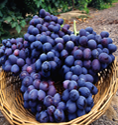Melatonin in food and in the gastrointestinal tract
Melatonin is a natural compound of almost ubiquitous occurrence [15-17]. Its presence was demonstrated in all major taxa of organisms, as far as tested, including bacteria, unicellular eukaryotes, macroalgae, plants, fungi and invertebrate animals. Several studies dealt with melatonin in edible plants [8,18-25]. One can conclude that relevant quantities of melatonin are present in most vegetables, fruit, nuts and cereals. However, the precise melatonin contents are sometimes affected by some uncertainties which result from particular methodological problems arising in material from photoautotrophic organisms. First, melatonin can be easily destroyed by oxidants during extraction [26], and, second, false positive and false negative data are easily obtained due to the presence of secondary plant metabolites, either mimicking melatonin or interfering with it in the assays [16,17,21,22]. It is a strict requirement to apply preservative conditions of extraction, to control the yield by determinations of recovery, and to obtain data by two methodologically different procedures. Although this has not been done in any plant tested, the widespread occurrence of melatonin in plants is beyond doubt. To date, the presence of melatonin was demonstrated in more than 20 dicot and monocot families. Usually, the amounts of melatonin reported varied considerably between species and between plant tissues, from the detection threshold to several hundred pg/g fresh weight. One should, however, be aware that these concentrations frequently greatly exceed avian and mammalian blood levels, which rarely attain more than 200 pg/mL during the nocturnal maximum, and can remain below 10 pg/mL during the day. Intestinal resorption of dietary melatonin should not be a particular problem because the amphiphilic molecule can easily cross any membrane. Therefore, an efficient uptake of the indoleamine from food should be expected to influence the blood plasma concentration (see below). Melatonin was observed to be elevated in alpine and mediterranean plants exposed to strong UV irradiation [25], a finding which may be seen in relation to melatonin's antioxidant properties antagonizing damage by light-induced oxidants. It is particularly worth mentioning the very high levels reported for several seeds and medicinal plants [8,15,24,27,28] (Table 1). The high amounts frequently found in seeds may be interpreted in terms of antioxidative protection within a dormant and more or less dry system, in which enzymes are poorly effective and cannot be upregulated, so that low molecular weight antioxidants such as melatonin are of advantage [20]. Moreover, melatonin's amphiphilicity may favor its accumulation especially in oily seeds.
In some of the medicinal plants, interactions or synergisms of melatonin with secondary metabolites may be of importance. In Scutellaria baicalensis, e.g., melatonin is accompanied by acteoside, baicalein, baicalin, wogonin and ganhuangenin, substances with antioxidant, antiinflammatory, sedating and immunomodulatory properties, interfering also with nitric oxide synthases and P450 monooxygenases, i.e., functions within the action spectrum of melatonin or affecting melatonin metabolism [17]. Melatonin is also present in fungi and, with regard to nutrition, this may be relevant especially for yeast. In cultures freshly prepared from commercially available cubes of baker's yeast, µmolar concentrations of melatonin were measured, sometimes exceeding 40 µM [29,30].
It is not yet known whether food is the only external source of melatonin in mammals. The presence of melatonin in bacteria including Escherichia coli [31] may suggest a contribution by intestinal bacteria to the high amounts of the indoleamine found in the gut [cf. discussion in ref. [17]]. However, strictly anaerobic bacteria, which predominate in the colon, have not yet been investigated.
The gastrointestinal tract deserves particular attention, not only with regard to melatonin uptake, but, even more, as an extrapineal site of melatonin biosynthesis, where this molecule is present in amounts exceeding those found in the pineal gland by several-hundred-fold, and from where it can be released into the circulation in a post-prandial response, especially under the influence of high tryptophan levels [32-36]. Gastrointestinal melatonin is also released to the lumen and participates in enterohepatic cycling [37-39]. Therefore, nutrition is not only linked to melatonin by uptake, but also by the influences of other food constituents and digestive physiology on melatonin release.
With regard to nutrition, a decisive question is whether the amounts of melatonin present in the food can suffice for changing its level in the blood plasma. This was first indicated by findings of Hattori et al. [19], who observed rises in plasma melatonin after feeding plant material rich in this compound. However, this result allowed a different interpretation, because other substances including its precursor tryptophan might have elicited a post-prandial release of gastrointestinal melatonin. This argument was recently refuted, at least in chicken, because the removal of melatonin from feed caused decreases in plasma levels [40]. The result gave rise to a statement that melatonin may not only be regarded as a hormone and a tissue factor, but also, in a sense, as an antioxidant vitamin.
The redox properties of melatonin may be unfavorable for its preservation in the food. Being an easily oxidizable compound capable of directly detoxifying several free radicals and other oxidants, leads, in turn, to the consequence of non-enzymatic destruction. The experience with melatonin extraction from plant material lets us assume that only a certain fraction of the compound present in food will arrive in the gut and even less in the circulation. Nevertheless, it may be possible that melatonin metabolites, especially substituted kynuramines formed by oxidative pyrrole-ring cleavage, which also possess protective properties and sufficient amphiphilicity [41-43], and/or their derivatives are taken up from the food and will turn out to be beneficial.



